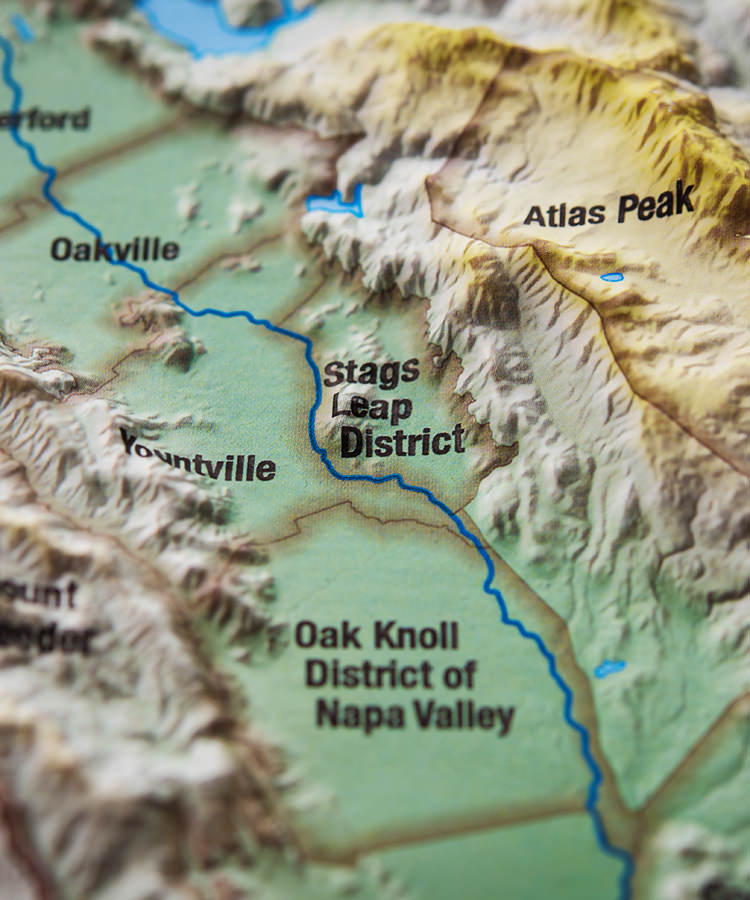California isn’t all beaches and movie stars. It’s actually much more wine country and mountains. While Napa and Sonoma steal most of the winemaking spotlight, the entire state is essentially blanketed with successful vineyards. Despite local variations in weather, climate, and soil types, the Golden State is essentially designed for viticulture, thanks to its one-of-a-kind combination of mountain ranges, coastline, and climate. Each of these three elements provides an element crucial to the production of fine wines, making California an unstoppable region from border to border. Read on for a crash course on why California is perfect for viticulture.
Mediterranean Climate = A long Dry Growing Season
“Mediterranean” means more than olive trees and a coastline when it comes to climate. At heart, it means that a region experiences distinct wet and dry seasons. Unlike much of the United States, California only gets rain during six months of the year; summer thunderstorms are a rare occurrence in the Golden State. Instead, rains bear down primarily between October and March, leaving a long dry summer ideal for grape growing.
Baby grapes and their flowers are extremely delicate, so late spring and midsummer rains can damage an entire crop in minutes. The humidity that comes after summer downpours also encourages mold and rot on the vines, another crippling problem for growers. Like their European counterparts, California growers are lucky for this dry summer climate, which bathes happy grapes in sun for their entire growing season. Because California harvests generally end before October, vintners here also avoid harvest rains that plump berries with excess water and dilute the flavor components of soon-to-be wines.
Mountain Ranges = Soil Diversity and Microclimates
Mountains and wine? Yup, they’re connected too.
Mountains provide natural barriers and wind tunnels that protect grape growing regions from extreme weather. In Napa and Sonoma, for example, local mountain ranges keep the morning fog hovering over the grapevines. Called a marine layer, this ocean fog keeps vines cool when triple-digit heatwaves roll across California. In more northerly and inland regions, like El Dorado County, Sierra Nevada snowmelt provides ample water for growing vines and elevation offers huge nighttime temperature shifts. Referred to as diurnal shifts in the biz, these temperature swings slow down the ripening process, helping grapes ripen more slowly, developing the complex flavors that make California wines equally chuggable and ageable.
The ancient volcanoes and tectonic shifts that create mountain ranges also present unique soil combinations for grapevines, and special microclimates that are essentially pockets with unique ecosystems that allow grapes to flourish in areas that would otherwise be too windy or cold for viticulture. Together, that means a diversity of nutrients, drainage, and aspects for vineyards which translates to environments for a range of grape varieties.
In the Central Coast, for example, Edna Valley Vineyards is situated on soils with extremely high levels of potassium, which regulates the vigor of the vines. In Amador County, the Sierra Nevada provides hard volcanic soils, which retain heat, water, and iron essential for successful vines.
Coastline = Nature’s Air Conditioning
The same way the Great Lakes moderate temperatures in the midwest, California’s vast coastline lets the cool Pacific moderate otherwise desert climate. In Napa and Sonoma, that cooling effect comes in the form of a marine layer, or thick fog that covers the region each morning. The fog provides moisture, but also slows the rising of temperatures that can top triple digits and fry baby grapes under the harsh sun.
In the Central Coast, an area where winegrowing is a key industry, Pacific winds are funneled between low-lying hills. Here, Pinot Noir flourishes where it would otherwise be far too hot. In truly coastal areas like Monterey, ocean-facing vines grow in a truly chilly environment ideal for cool-climate grapes like Chardonnay and Pinot Noir. As far north as Mendocino (a 12-hour drive from the Central Coast) the ocean makes vineyards surrounded by Redwoods even cooler.
Like the Visit California commercials that splice images of snow-capped mountains with surfers, California’s huge size and unique geography provide a wealth of diverse ecosystems that translate into diverse wines. Mountains, coastline, and climate collide in a trifecta perfect for viticulture from L.A. to Crescent City.
